A to Z - HIGHLIGHTS OF DERBY AND DISTRICT - PART 12
The A to Z – highlights of Derby and District is a 19-part series and will be published weekly.
North Parade – Pride Park

NORTH PARADE
When William Strutt began selling off parts of his St Helen’s House estate. The land was sold to the North Parade Building Club between 1818 and 1822. The properties have been built in two lots of eight on a falling site, which provides an extra storey at the rear. Ashlar faced and of substantial design, they were built by William Smith of Derby.
OAKWOOD
One of the few open spaces remaining on the northeast side of Chaddesden was acquired in the 1980s for development. Despite local opposition, permission was granted for a new estate to be built and named Oakwood. Fortunately, Chaddesden Wood survived and still retains its old name despite now being part of Oakwood.
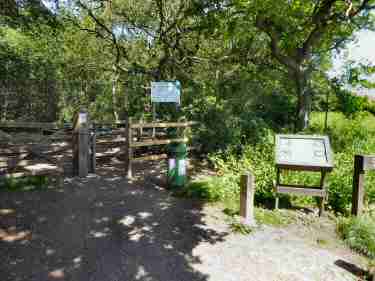
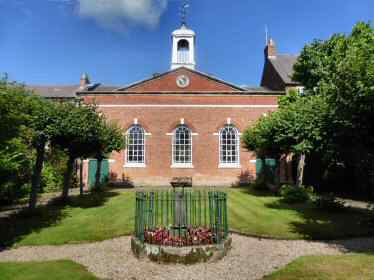
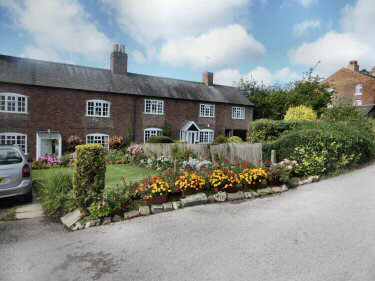
OCKBROOK
There are two distinct parts to Ockbrook. The Old Settlement is where Occa, an Anglo-Saxon, and his people built their homes in the 6th century on the banks of the brook and from where the village derived its name. Alongside it is the Moravian Settlement, a product of the 18th century, with its delightful terrace of red-brick Georgian buildings and strikingly attractive church approaching up a tree-lined path.
OCKBROOK MORAVIAN CHURCH
The Moravian Church was founded in 1457, in Bohemia, and was based on simplicity in life and worship. In 1750, a Congregation of the Moravian Church was established in Ockbrook. After overcoming many obstacles, mainly due to local opposition, two years later a church was opened. During the latter part of the 18th century, the village was the centre of the Moravian Church in England.
OCKBROOK MORAVIAN COMMUNITY
The Old Post Office is now a private house. It was once the Moravian Congregation Shop, where ‘the best quality goods at reasonable prices were offered. Shopstones Cottages were built as family houses and visitors to the Settlement usually stayed at the New Inn (now Greenside). The extension on the western side was used as a Sunday School and during the First World War as a hospital for servicemen.

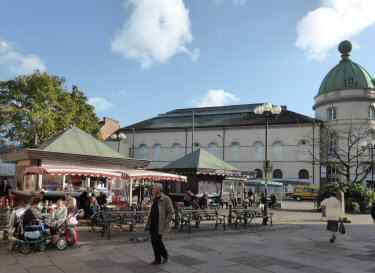
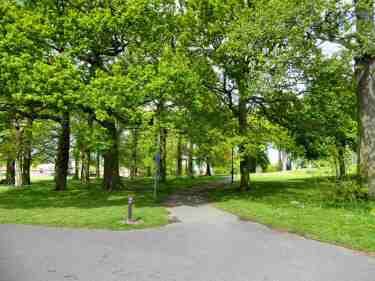
OLD GRAMMAR SCHOOL, ST PETER’S STREET
It is not known when Derby School was founded, or who it was founded by. It is first mentioned in a Darley Abbey charter in 1146. Shortly after the dissolution of the monasteries, a charter was passed in 1554, for a free grammar school to be built in Derby. As a consequence, the Tudor building in St Peter’s Churchyard was erected and used as a school for three centuries.
OSMASTON
Osmaston, once a tiny village, was by the 17th century in the hands of the Wilmot family who built and lived in Osmaston Hall. In 1888, the Midland Railway bought the house and part of the estate for £90,000. They turned the house into offices and laid a siding almost up to the front door. The northern part of the park was used to accommodate the carriage and wagon works.
OSNABRUCK SQUARE
Today when you leave the Market Hall at Derby by the doors at the southern end you enter Osnabruck Square. It was named after Derby’s twin city in Germany. A stone pillar in the centre of the square announces that the German city is 500 miles away. Osnabruck was founded in 780AD, and it has many historic buildings and, like Derby, is close to beautiful countryside.
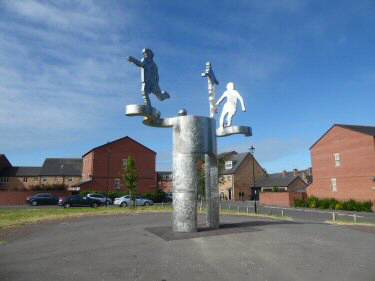


PEAR TREE
This inner-city suburb derived its name from Pear Tree Farm before the land was sold off for development in the 1800s and the house demolished. Pear Tree and Normanton Railway Station were opened in 1890 and Thomas Ley’s Vulcan Works stood next to the station, before demolition in 1986. The main landmark in Pear Tree for many years was the Baseball Ground, the home of Derby County Football Club.
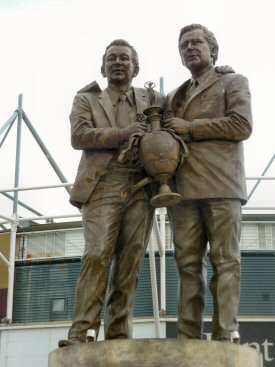
PECKWASH MILL CHIMNEY
Peckwash Mill is located by the River Derwent north of Allestree. There was a working corn mill on the site in the 13th century. By the 17th century, the mill had turned to paper production but also continued to grind corn until 1793. Following the building of the brick chimney in 1895, a local man obtained a permanent injunction preventing the emission of smoke. This resulted in the business going into liquidation.
PICKFORD’S HOUSE (NOW A MUSEUM)
Pickford’s House was built by eminent architect Joseph Pickford between 1769 and 1770 for his occupation. The façade was designed to impress clients who might well only see the front of the house. For those who entered the premises, they would find the hall richly decorated with ornamental plasterwork and probably be taken into the house’s finest room, the saloon.
PRIDE PARK
The vast expanse of railway land, now known as Pride Park became derelict after it fell out of use. It was badly contaminated and required extensive redevelopment, which took over ten years to reclaim. During the last twenty years, Pride Park has developed into one of the most important business and commercial property destinations in the region.
